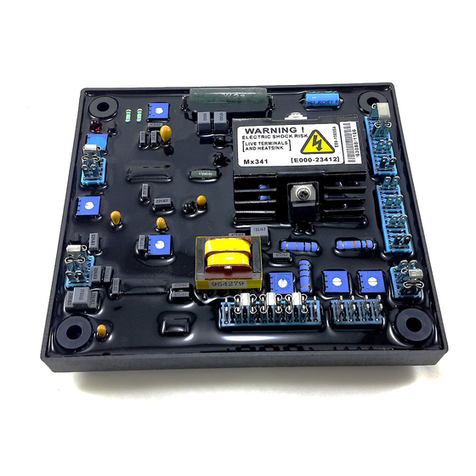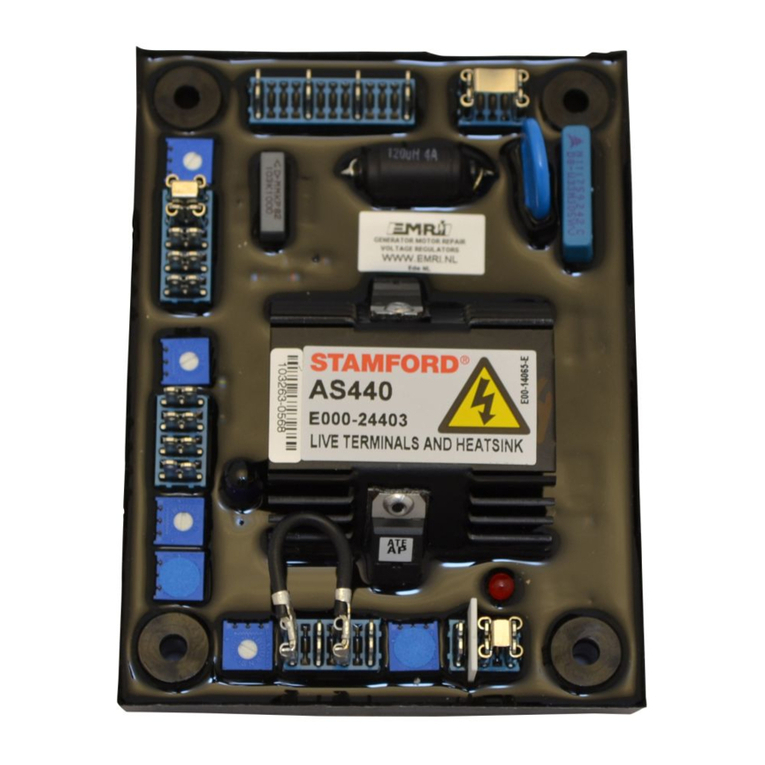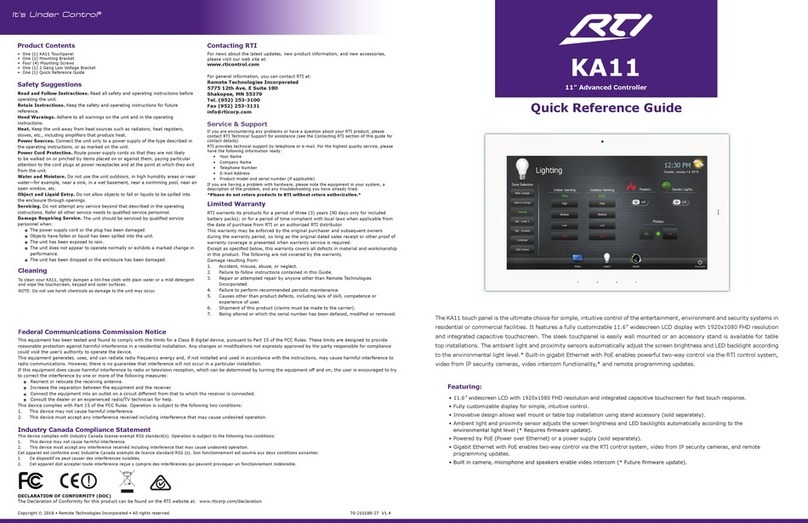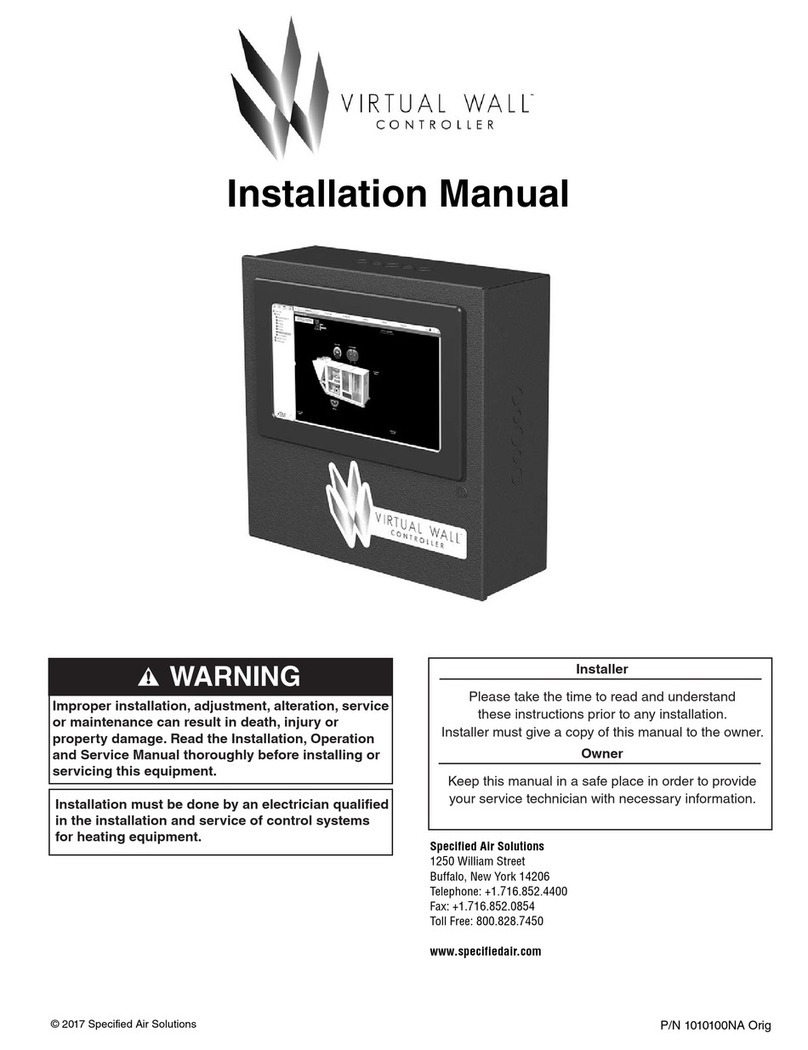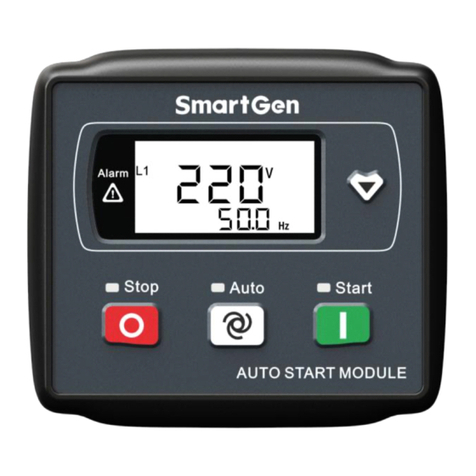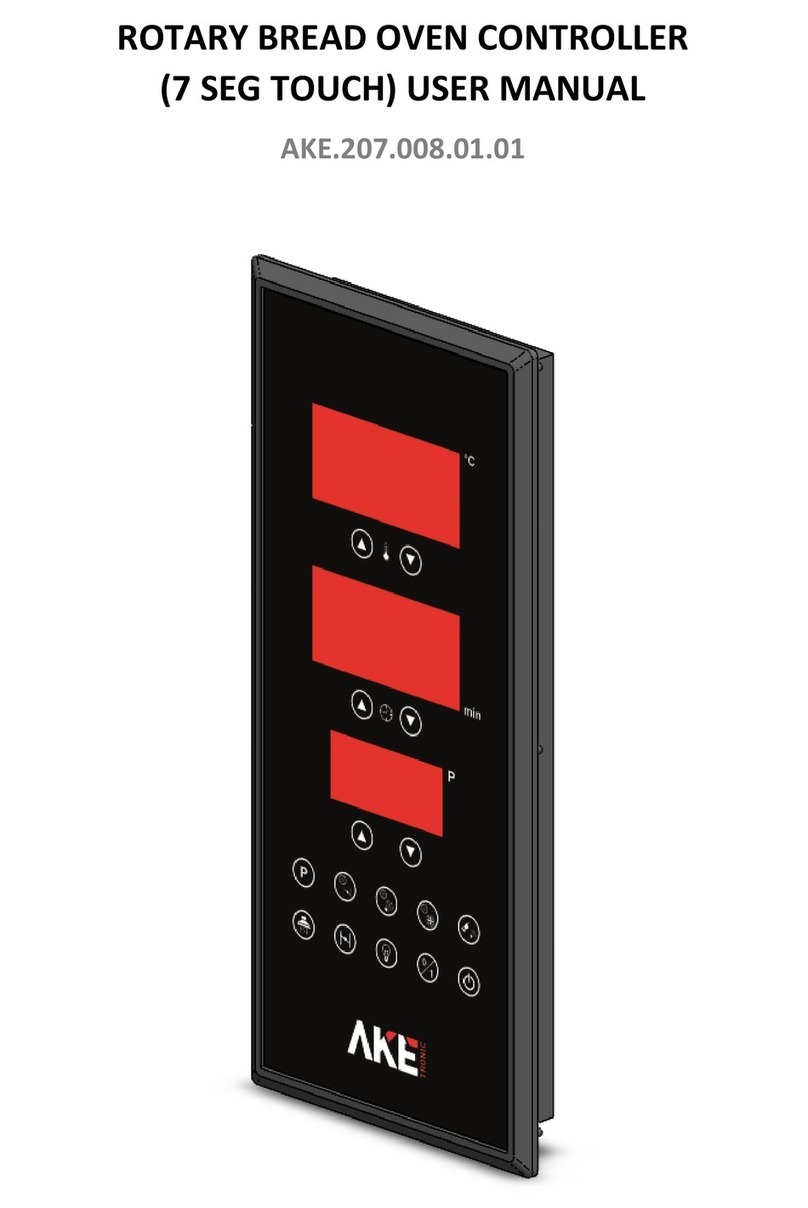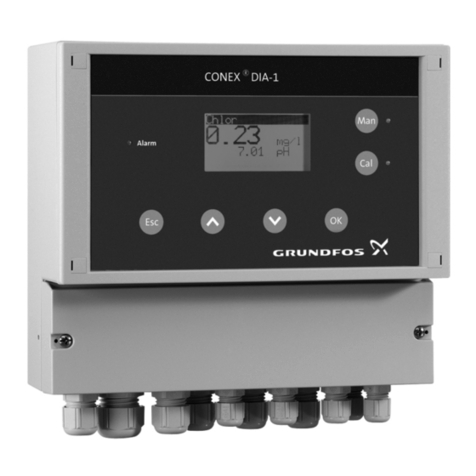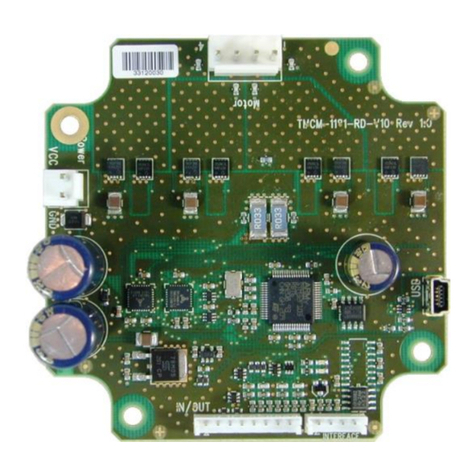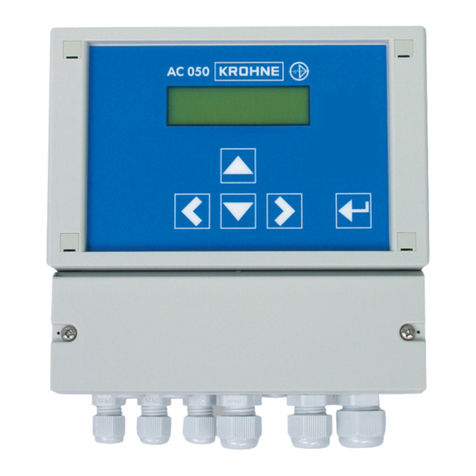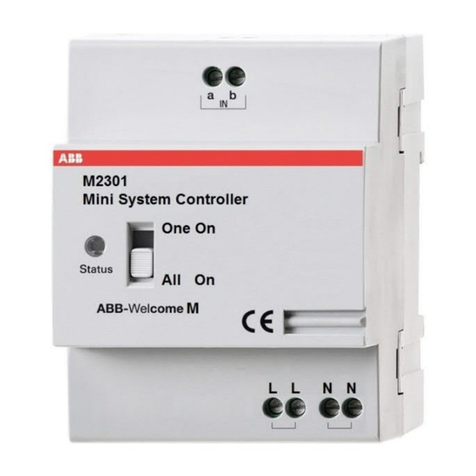Stamford MA327 Guide

MA327 AUTOMATIC VOLTAGE
REGULATOR (AVR)
SPECIFICATION, INSTALLATION AND ADJUSTMENTS
General description
The MA327 is a three phase full wave, pulse width modulated
type automatic voltage regulator (AVR) and forms part of the
excitation system for a brushless generator.
Excitation power is derived from a three-phase permanent
magnet generator (PMG), to isolate the AVR control circuits
from the effects of non-linear loads and to reduce radio
frequency interference on the generator terminals. Sustained
generator short circuit current is another feature of the PMG
system.
The AVR senses the voltage on the main generator winding
and controls the power fed to the exciter stator and hence the
main rotor to maintain the generator output voltage within the
specified limits, compensating for load, speed, temperature
and power factor of the generator. Three-phase root mean
squared (RMS) sensing is employed for superior voltage
regulation.
Soft start circuitry is included to provide a smooth controlled
build up of generator output voltage.
A frequency measuring circuit continually monitors the speed
of the generator and provides under-speed protection of the
excitation system by reducing the generator output voltage
proportionally with speed below an adjustable threshold. A
further enhancement of this feature is an adjustable volts per
Hertz slope to improve engine recovery time on turbo charged
engines.
Protection circuitry is included which cuts off the excitation
power in event of over-voltage.
Excitation limiting is a standard feature allowing control over
the amount of short circuit current flowing during short circuits
of the generator output.
Uncontrolled over-excitation is limited to a safe period by
internal shutdown of the AVR output device. This condition
remains latched until the generator has stopped.
For complete protection, a miniature circuit breaker option is
available, providing circuit isolation in the event of a short
circuit AVR power output device.
Provision is made for the connection of a remote voltage
trimmer allowing the user fine control of the generators
output.
Technical specification
Sensing input
Voltage 170-250 Vac max
Frequency 50-60 Hz nominal
Phase 1 or 3
Wire 2 or 3
Power input (PMG)
Voltage 140-220 Vac max
Frequency 100-120 Hz nominal
Phase 3
Wire 3
Output (limited by PMG output)
Voltage max 180 V dc (1800 rpm)
Current continuous 6 A
Intermittent 12 A for 10 secs
Resistance 15 ohms minimum
Regulation
(4% engine governing) +/- 0.5% RMS
Thermal drift
0.015%V per degree centigrade
change in AVR ambient
Soft start ramp time
0.5 - 4 seconds
Typical system response (AVR and generator)
Exciter current to 97% 300 ms
External voltage adjustment
+/-5% with 5 k ohm 1 watt trimmer
Under frequency protection
Set point 97% Hz
Slope 100-300% down to 25 Hz
Max. Dwell 10 % V/ Sec. recovery
Unit power dissipation
30 watts max
Accessory input
+/-1 volt input = +/- 5% generator volts
Quadrature droop sensitivity
0.04 Amps for 5% droop @ pf
Excitation limit
Setting range 50 - 100%
Over excitation protection
Setting range 60-90 V dc
Time delay inverse time
< setting = infinity
>25 % setting = 10 seconds max
Over-volts protection
Setting range 250-350 volts
Time delay 1 second fixed
Circuit breaker trip coil voltage 10 to 60 V dc
Circuit breaker trip coil resistance 50 to 100 ohms
Environmental
Vibration 5-10Hz 1mm pk
10-100Hz 50mm/sec RMS
100Hz-300Hz 4.4g pk
Relative humidity 0-70c 95%
Operating temperature -40 to +70c
Storage temperature -55 to +80c
Fuse rating
10 Amps 1.25ins. quick-blow ceramic CSA UL approved
Accessories are available for this AVR.

Design detail
The main functions of the AVR are as follows:-
Potential divider takes a proportion of the generator output
voltage and attenuates it. Provision is made to allow the
attenuation ratio to be adjusted by the internal AVR ‘Volts’
potentiometer or an external hand trimmer if required.
Quadrature droop circuit converts the current input from a
CT into a voltage which is phase mixed with the sensing
voltage. The result is a net increase in the output from the
sensing network as the power factor lags, causing the
reduction in excitation needed for reactive load sharing of
paralleled generators.
RMS converter converts the AC signals from the potential
divider into a DC signal representing the Root Mean Squared
value of the wave form.
Summing circuit provides an interface between the AVR and
accessories, usually a power factor controller, allowing the
accessory output voltage to be summed with the sensing
voltage for control purposes.
Power supply components consist of transformers resistors,
regulator diodes and smoothing capacitors to provide the
required voltages for the various electronic circuits.
Precision voltage reference is a highly stable temperature
compensated voltage reference used for dc voltage
comparison purposes.
Soft start circuit overrides the precision voltage reference
during run up to provide a linear rising voltage.
Amplifier compares the sensing voltage to the precision
reference voltage and amplifies the difference (error) to
provide a controlling signal for the power device.
Stability circuit provides adjustable negative ac feedback to
ensure good steady state and transient performance of the
control system
Power control driver controls the conduction period of the
output device using pulse width modulation techniques.
Power control devices vary the amount of exciter field
current in response to the error signals produced by the
amplifier and power control driver.
Sync circuit provides a short pulse to synchronise the Under
Frequency Roll Off (UFRO) and power control circuits to the
generator cycle period.
UFRO circuit measures the period of each electrical cycle and
reduces the reference voltage linearly with speed below an
adjustable threshold. A light emitting diode (LED) gives
indication of under-speed running.
Engine relief or load acceptance circuit provides adjustment
for increasing the voltage roll off (gradient of V/Hz slope), to
aid engine recovery after the application of a block load. A
“Dwell” feature is included which delays the rate of recovery of
generator volts after application of load, providing further
engine assistance.

Position of adjustments
Stability Table
Switch position
0 = under 100kW 5 = 2500 - 3200 kW
1 = 100 - 500 kW 6 = 3200 - 4000 kW
2 = 500 - 1000 kW 7 = 4000 - 4800 kW
3 = 1000 - 1800 kW 8 = not used
4 = 1800 - 2500 kW 9 = not used

Position of adjustments
Control Function Direction
Volts To adjust generator output voltage Clockwise increases output voltage
Stab. To prevent voltage hunting Clockwise increases the damping effect
Stability selection To optimise transient performance See table
UFRO To set Under Frequency Roll Off knee point Clockwise reduces knee point frequency
UFRO select 50 / 60 To set UFRO control range Switch position 5 = 50 Hz 6 = 60 Hz
Droop To set voltage droop to 5% at 0 PF Clockwise increases the droop
Trim To match AVR input to Accessory output Clockwise increases AVR sensitivity
Dip To adjust frequency related voltage dip Clockwise increases the dip
Dwell To set the rate of voltage recovery time Clockwise lengthens the recovery time
Mode To select AVR or hand control mode 8 = AVR control. 4 = Hand control
Ramp To set the soft start voltage ramp time Clockwise lengthens the ramp time
O / Ex (sealed) To adjust over excitation trip level Clockwise increases the trip level
O / V (sealed) To set over voltage protection trip level Clockwise increases the level
PWL (sealed) To set the maximum excitation voltage limit Clockwise increases the voltage limit
Hand (sealed) For manual excitation control Clockwise increases excitation
Overload detector continuously monitors the excitation
voltage and provides signals to shutdown the AVR power
output device and trip an optional circuit breaker if the
threshold setting is exceeded.
The circuit breaker isolates power from the exciter and AVR
power devices if sustained over-excitation occurs. An
overload condition produces a latched fault requiring the
generator to be stopped for reset
Over-voltage monitor continuously monitors the voltage at
the AVR terminals and provides signals to shut down the AVR
power output device and trip an optional circuit breaker.
The circuit breaker isolates power from the exciter and AVR
power devices if sustained over-voltage occurs. A fixed one
second timer is included in the circuit to prevent operation
during transient over-voltages, which are normal after load
removed. The generator must be stopped to reset an over
voltage trip.
Voltage adjustment
The generator output voltage is set at the factory, but can be
altered by careful adjustment of the volts control on the AVR
board, or by the external hand trimmer if fitted.
WARNING!
DO NOT INCREASE THE VOLTAGE ABOVE THE RATED
GENERATOR VOLTAGE. IF IN DOUBT, REFER TO THE
RATING PLATE MOUNTED ON THE GENERATOR CASE.
If a replacement AVR has been fitted or re-setting of the
VOLTS adjustment is required, proceed as follows:-
Before running generator, turn volts control fully anticlockwise.
Turn remote volts trimmer (if fitted) to midway position.
Turn stability control to midway position.
Connect a suitable voltmeter across line to neutral of the
generator.
Start generator set, and run at a no-load condition at nominal
frequency e.g. 50-53 Hz or 60-63 Hz.
If the red light emitting diode (LED) is permanently
illuminated, refer to the under frequency roll off adjustment
(UFRO).
If the LED is flashing then refer to Over Excitation and Over-
Voltage protection adjustments.
Carefully turn the VOLTS control clockwise until rated voltage
is reached.
If voltage instability is present at rated voltage, refer to the
Stability adjustment, then re-adjust voltage if necessary.
Voltage adjustment is now complete.

Stability adjustment
The AVR includes a STABILITY or damping circuit to provide
good steady state and transient performance of the generator.
A switch is provided to change the response of the stability
circuit to suit different frame size generators and applications,
(see stability table above).
The correct setting of the stability control can be found by
running the generator at no load and slowly turning the
stability control anti-clockwise until the generator voltage
starts to become unstable.
The optimum or critically damped position is slightly clockwise
from this point, ( i.e. where the machine volts are stable but
close to the unstable region ).
Under Frequency Roll Off adjustment (UFRO)
The AVR incorporates an under speed protection circuit which
gives a volts per Hertz characteristic when the generator
speed falls below an adjustable threshold known as the knee
point.
The red light emitting diode (LED) gives indication that the
UFRO circuit is operating. Turning the UFRO control
clockwise lowers the frequency setting of the knee point and
extinguishes the LED.
For optimum setting, the LED should illuminate as the
frequency falls below just below nominal, i.e.47-48 Hz on a 50
Hz system and 57-58 Hz on a 60 Hz system.
The UFRO adjustment is pre-set and sealed at the works and
normally only requires the selection of 50 / 60 Hz using the
selector switch.
If the LED is flashing, refer to Over Excitation and Over-
Voltage protection adjustments.
Dip adjustment
The DIP adjustment allows the user to have some control
over the amount of frequency related voltage dip upon the
application of load.
This feature is mostly used when the generator is coupled to
turbo charged engines with limited block load acceptance,
and operates only when the speed is below the UFRO knee
point, (LED illuminated).
The circuit works by increasing the volts per Hertz slope to
give greater voltage roll off in proportion to falling speed.
With the DIP control fully anti-clockwise the generator voltage
characteristics will follow the normal volts per Hertz line as the
frequency falls below nominal.
Turning the DIP control more clockwise provides greater
voltage roll off allowing easier engine recovery.
Dwell adjustment
The DWELL operates only when the speed has fallen below
the knee point set by the UFRO adjustment. With the DWELL
control turned fully anti-clockwise, there is no DWELL and the
voltage recovery will follow the engine speed recovery.
Turning the DWELL control clockwise, limits the maximum
rate of change of voltage recovery as the engine speed
recovers.
Droop adjustment
Generators intended for parallel operation are fitted with a
quadrature droop CT which provides a correction signal for
the AVR, allowing each generator to share reactive current. It
is important to match the generator no-load voltages to less
than 1 % of each other, to ensure good reactive load sharing.
The DROOP adjustment is normally pre-set in the works to
give 5% voltage droop at zero power factor.
Clockwise increases the amount of CT signal injected into the
AVR. The generator terminal voltage falls with lagging power
factor and rises with leading power factor. With the control
fully anti-clockwise there is no droop.
If the DROOP potentiometer needs to be reset for any reason,
then the following procedure should be followed:-
Run the generator at 50% rated current at any power factor
between 0.8 lagging and 1.0 (unity). Ensure that the generator
rated current value used is the true rating without any de-rate
factor. If in doubt, check with the factory.
Measure the AVR S1 S2 voltage. This should be between 0.2
- 1.9 volts ac.
Calculate the required position of the DROOP potentiometer
(0 - 100%), where 0% = fully anti-clockwise and 100% = fully
clockwise :-
% position =
If the result is greater than 100, then it suggests that the
Droop CT ratio is incorrect.
Trim adjustment
An auxiliary input is provided to connect to accessories, (A1,
A2) and is designed to accept DC signals up to +/- 5 volts.
These terminals are usually used for connection to a power
factor controller, if required.
The DC signals presented to this input adds to, or subtracts
from the AVR sensing circuit, depending on polarity, and
allows the accessory to have an influence on generator
excitation.
The TRIM adjustment allows the user to determine or trim
how much control the accessory has over the AVR.
With the TRIM control fully anti-clockwise the accessory has
no control, clockwise gives maximum control.
Any signal connected to this input must be fully floating
and earth free.
20
S1 S2 Voltage

Over Voltage adjustment
The AVR includes protection circuitry to remove generator
excitation in the event of an over-voltage on the AVR
terminals. Separate terminals are provided for the overvoltage
sensing circuit (E3, E4). The shut-down signal acts on the
AVR power output device.
Provision is made for the optional connection of a miniature
circuit breaker to break terminals K1, K2, which cuts off the
excitation power directly. This provides extra protection in the
event of a malfunction of the AVR power output device.
The trip coil on the circuit breaker connects to the AVR which
provides a trip signal to energise the coil in the event of an
over-voltage.
The over-voltage adjustment is set and sealed at the factory
but can be reset on retrofit AVRs. Clockwise rotation of the O
/ V adjustment increases the voltage trip level. An over
voltage trip condition is indicated by a flashing red LED (which
also indicates over excitation trip). The generator must be
stopped to reset an over voltage trip condition.
Over excitation adjustment
The adjustment is set and sealed in the works and should not
be altered. The shut-down signal acts on the AVR power
output device.
Provision is made for the optional connection of a miniature
circuit breaker to break terminals K1, K2, which cuts off the
excitation power directly. This provides extra protection in the
event of a malfunction of the AVR power output device.
The trip coil on the circuit breaker connects to the AVR which
provides a trip signal to energise the coil in the event of an
over-excitation condition.
An over excitation condition is indicated by a flashing red LED
(which also indicates over voltage trip). The generator must
be stopped to reset an over excitation trip condition.
Ramp adjustment
The AVR includes a soft start or voltage ramp-up circuit to
control the rate of voltage build up when the generator runs
up to speed. This is normally pre-set and sealed to give a
voltage ramp-up time of approximately 3 seconds. If required,
this can be adjusted between the limits defined in the
specification.
Sometimes this feature is useful for starting large motors or
energising large transformers. The technique is to run the
generator up to speed with AVR terminals K1 K2 operated by
a normally open relay (240v dc 10A rating). When the relay is
closed, the voltage will build up smoothly over time, keeping
the load surge currents to a minimum.
PWL
This adjustment controls the Pulse Width Limit of the AVR
power output device and controls the maximum excitation that
the AVR can deliver. This is pre-set to deliver the required
short circuit current for the generator and should not be
altered.
Mode and Hand
These controls are for service engineers use only and should
not be tampered with. They allow the excitation to be
controlled manually.
TD_MA327.GB_09.02_01
PO Box 17 • Barnack Road • Stamford • Lincolnshire • PE9 2NB
Tel: 00 44 (0)1780 484000 • Fax: 00 44 (0)1780 484100
Website: www.newage-avkseg.com
© 2002 Newage International Limited.
Reprinted with permission of N.I. only.
Printed in England.
Other Stamford Controllers manuals
Popular Controllers manuals by other brands
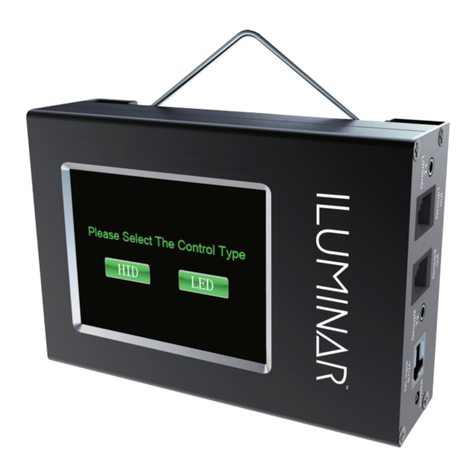
Iluminar
Iluminar Touch+ user manual

IBM
IBM 3745 Series Connection and Integration Guide
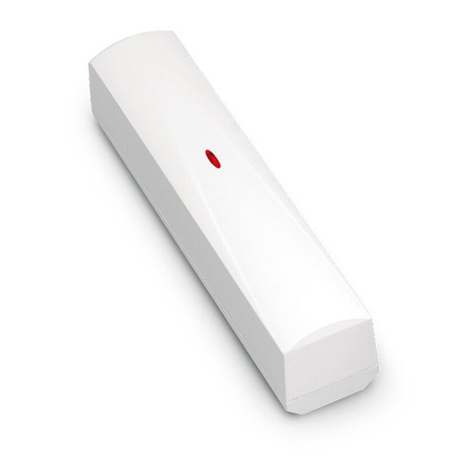
Satel
Satel MICRA VERSA-MCU Quick installation guide
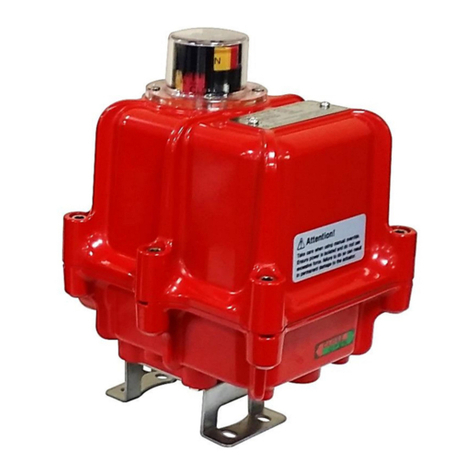
HKC
HKC HQ-006 Installation, operation & maintenance manual
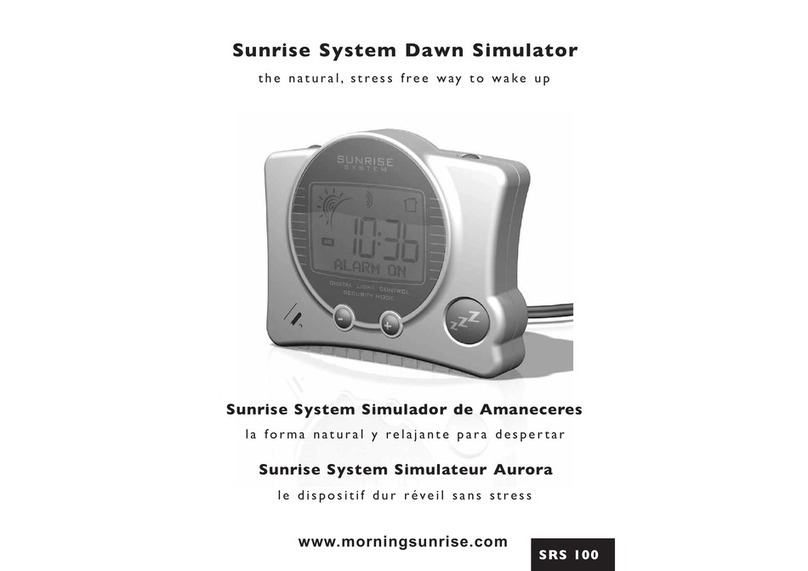
Sunrise System
Sunrise System SRS 100 Guide
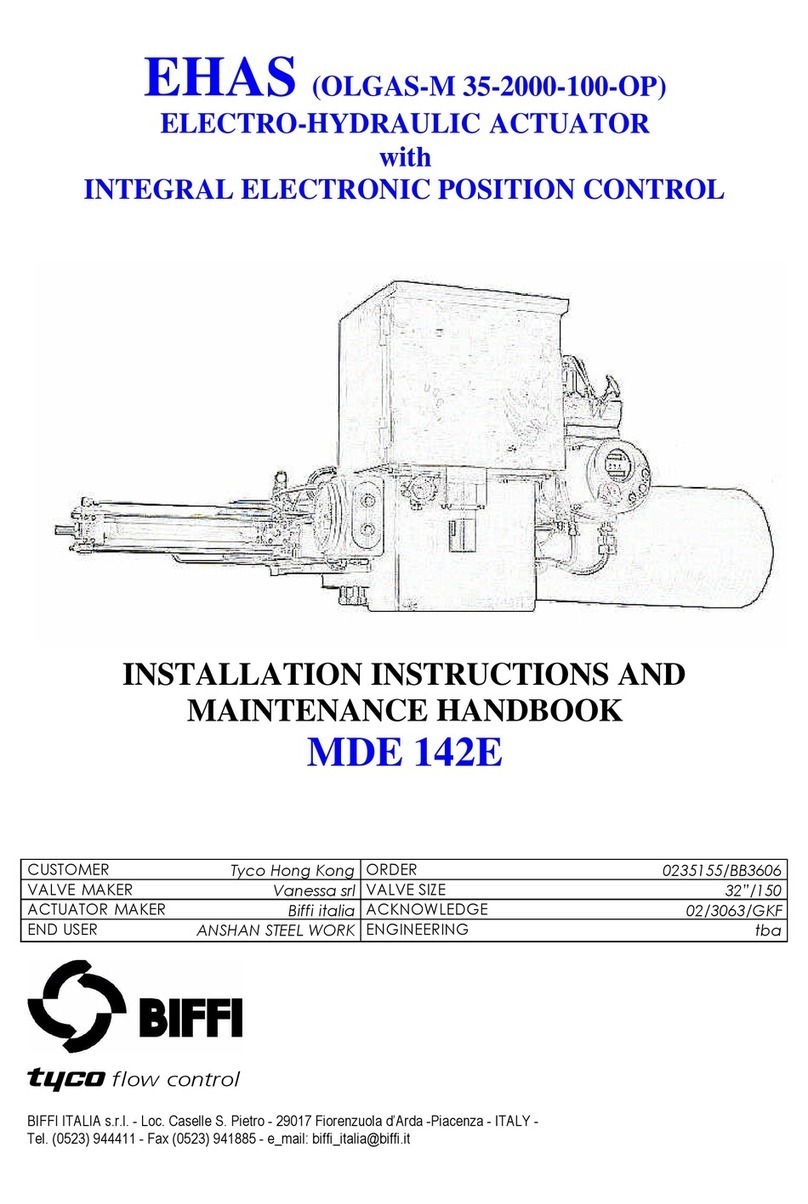
Tyco
Tyco BIFFI EHAS Series Installation Instructions and Maintenance Manual
